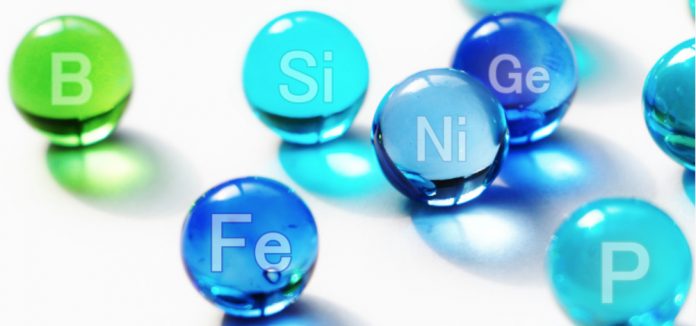Prof Masahiro Kamitani, Department of Chemistry at Kitasato University, Japan, explains the significance of developing catalysts in the manufacturing industry and improvements made in iron-based chemical processes
Chemical processes, which are central to manufacturing and constitute one of the major industries in Japan, consist of one or several chemical reactions converting raw materials into various products such as plastics, rubber, oils and pharmaceutical. However, not all chemical reactions are efficient, and time and energy are required to complete such reactions. An appropriate catalyst reduces the waste and energy requirement for reactions: this allows accelerating the manufacturing process. In this regard, the development of new catalysts would be effective not only in enhancing industrial competitiveness by improving production efficiency, but also in reducing the environmental burden through energy conservation and reduction of CO2 emissions.
Approximately one-third (28.9%) of the world’s energy consumption is attributed to the steel, machinery and chemical industries, for example. Therefore, the improvement of chemical processes will substantially contribute toward achieving sustainable development goals (SDGs); for example, one such SDG is to ‘‘upgrade infrastructure and retrofit industries to make them sustainable, with increased resource-use efficiency and greater adoption of clean and environmentally sound technologies and industrial processes, with all countries taking action in accordance with their respective capabilities (9.4).’
Resources for catalysts
Metals that are rare, expensive, and limited in reserves, such as platinum and palladium, are known as precious metals (including rare metals and rare-earth metals). Precious metals are used in a variety of chemical processes as catalysts; however, only a few countries export these worldwide. Consequently, their prices and supply are susceptible to fluctuations depending on the global situation.
By contrast, metals that are abundant, inexpensive, and ubiquitous on the Earth, such as iron and copper, are called common metals. Iron is the most abundant metal on the planet and is considered a promising alternative to precious metals. Notably, iron-based catalysts have been used for over a century in the Haber–Bosch method, a well-known ammonia production process that was likened to “making bread from air”. Nevertheless, aside from a few such examples, the practical uses of iron catalysts have remained quite limited to date.
Element Strategy
According to a report by the Ministry of Economy, Trade and Industry (METI), Japan is completely reliant on imports of both precious and common metals. This reflects the vulnerability of Japanese industries toward oscillations in the prices and supply of metal resources owing to geopolitical risks. To overcome this vulnerability, national projects represented by the “Element Strategy,” which entails reducing the heavy reliance of industrial technologies on precious metals, are being promoted in Japan. For the real-world application of technologies developed in academia, joint research with private companies and studies on applicability are indispensable, and the lack of such studies is a major barrier to practical applications. In this regard, the aforenoted national projects provide both financial support and research networks between academia and industry to promote the development of technologies to replace the precious metals used in current industrial processes with abundant resources such as iron.
Future impact of iron catalysts
To address social demands regarding the development of innovative catalysts that are significantly superior to existing catalysts and minimization of the reliance on precious metals for achieving SDGs, we have been conducting research—supported by the Grant-in-Aid for Scientific Research (KAKENHI) and the New Energy and Industrial Technology Development Organization (NEDO), Japan — to develop novel iron catalysts.
“We are developing several high-performance iron catalysts to reduce the dependence of chemical processes on precious metal catalysts while achieving closer collaborations between industry, academia and government.”
Prior research has led to the development of an iron catalyst (1) that outperforms precious metal catalysts currently employed in two chemical processes, namely, the iridium-catalysed synthesis of organoboron reagents (2) and platinum – catalysed silicone production (3). In 2020, a private company launched this iron catalyst as a next-generation catalyst, kick-starting its practical use (4). The key to the success of this research is that since its dawn and the development process, we have been working closely with private companies and other research institutions, namely the National Institute of Advanced Industrial Science and Technology (AIST) and Osaka City University, plus developing and refining catalysts while being constantly conscious of the actual use and practicality of these catalysts in chemical processes. Currently, we are developing several high-performance iron catalysts to reduce the dependence of chemical processes on precious metal catalysts while achieving closer collaborations between industry, academia and government.
References
(1) Kamitani et al., Bull. Chem. Soc. Jpn. 91, 1429 (2018).
(2) Kamitani et al., Chem. Lett. 48, 898 (2019).
(3) Kamitani et al., Chem. Lett. 48, 1196 (2019)
(4) TCI product website: D5886
Please note: This is a commercial profile
© 2019. This work is licensed under CC-BY-NC-ND.











